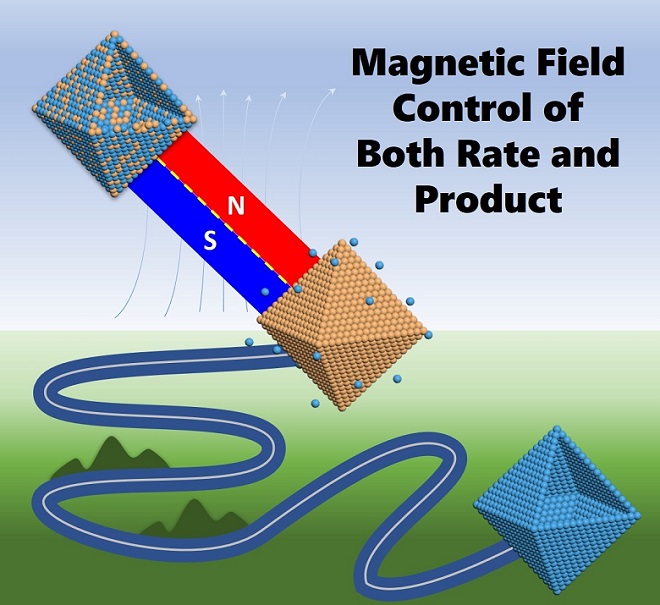Jul 20,2021|By
Using the SM1 superconducting magnet, a large scientific device with a steady-state high magnetic field, scientists carried out research on special functional materials and found that high magnetic fields can effectively regulate the rate, reaction path and reaction products of chemical reactions. The results were published in the Journal of Physical Chemistry Letters recently.
The research was conducted by a team of researchers from the High Magnetic Field Laboratory and the Institute of Solid State Physics from Hefei Institutes of Physical Science (HFIPS), Chinese Academy of Sciences(CAS), and Anhui University.
Controlling the chemical reaction rate and products is the core issue of research in the field of chemistry and materials science. Like temperature and pressure, the magnetic field is an important basic thermodynamic parameter, which can directly act on the basic components of matter (nucleus and extranuclear electrons) through non-contact energy transfer, then affecting the physical and chemical properties of matter.
"If the magnetic field, especially the high magnetic field, can be introduced into the chemical reaction of material synthesis, it will hopefully help mankind discover novel magnetron effects and create new substances,” said Prof. SHENG Zhigao, who led the team.
How will high magnetic fields regulate the chemical reactions and material synthesis? In 2016, the team found Physicsmagnetron Fe3O4 magnetic hollow structure synthesis. Two years later, they discovered the magnetic acceleration effect of the non-magnetic Si nano hollow structure and the magneto-catalytic effect of the Zn/CuSO4 basic redox reaction. Then they chose the classical Galvanic Replacement reaction to further carry out the study of magnetron chemical reaction.
With the help of the SM1 superconducting magnet and its supporting magnetron chemical reaction synthesis equipment, the research team conducted a systematic study on the magnetic effects (magnetron rate, magnetron product) of the electric displacement reaction between Mn3O4 and Fe2+. The latest research results showed that the magnetic field can effectively accelerate the electric displacement reaction between Mn3O4 and Fe2+. As a result, the reaction speed of Mn3O4 and Fe2+ to prepare hollow nanomaterials is significantly increased, that is, the magnetic field has an equivalent catalytic effect.
This is the first time that researchers found a hidden Kirkendall effect that could be induced by a strong magnetic field in the reaction system, that is, a magnetic field induced a new reaction. This new effect was triggered by a high magnetic field and then accelerated by a magnetic field, competing with the original electric displacement reaction and acting together on the reaction system, thereby effectively affecting the product of the entire chemical reaction.
"The results of this series of studies on magnetron chemical reactions not only confirmed that high magnetic fields play an important role and great potential in the regulation of chemical reactions but also provided new paths and opportunities for the magnetron synthesis of special functional materials," said Prof. SHENG.

Attachments Download: